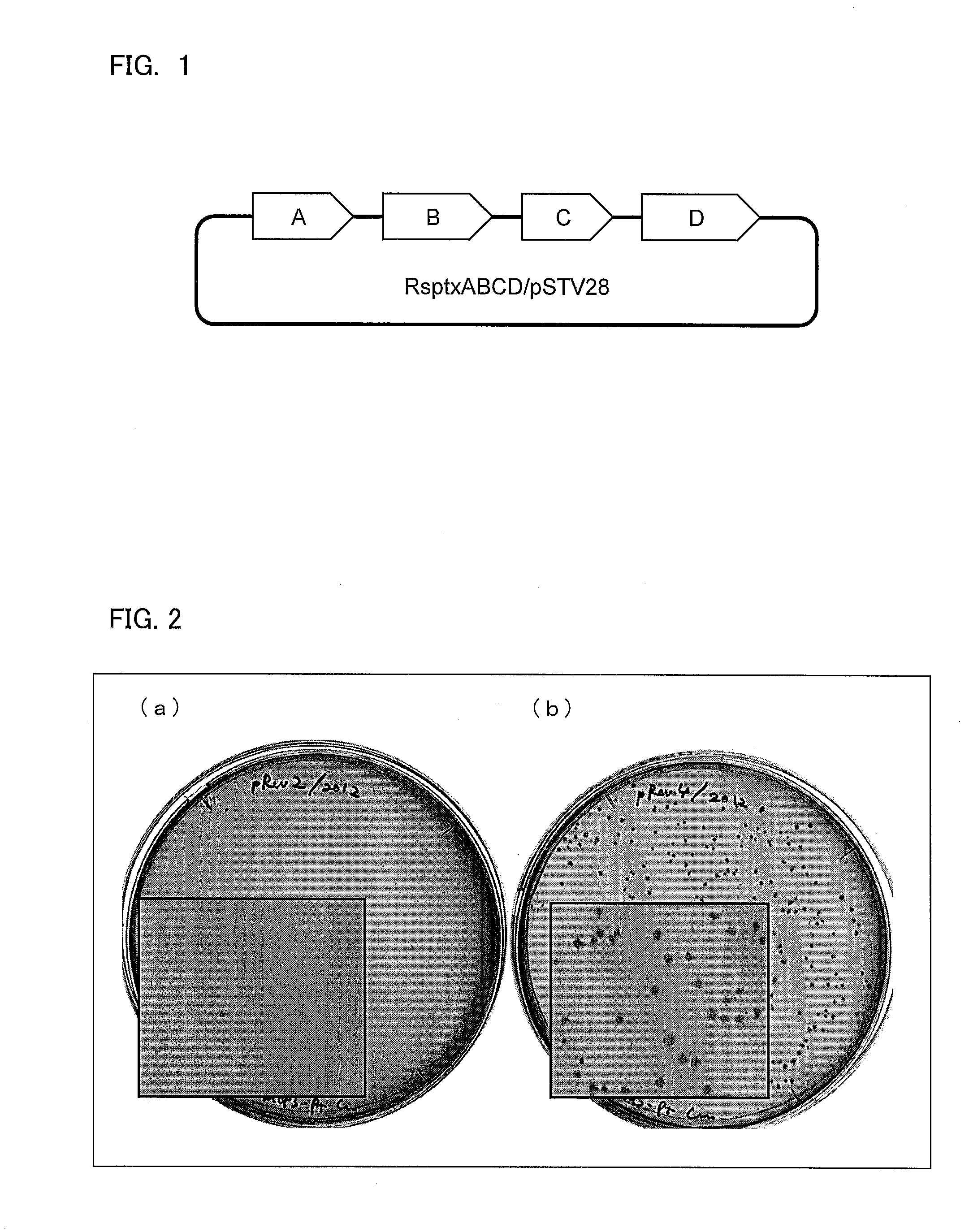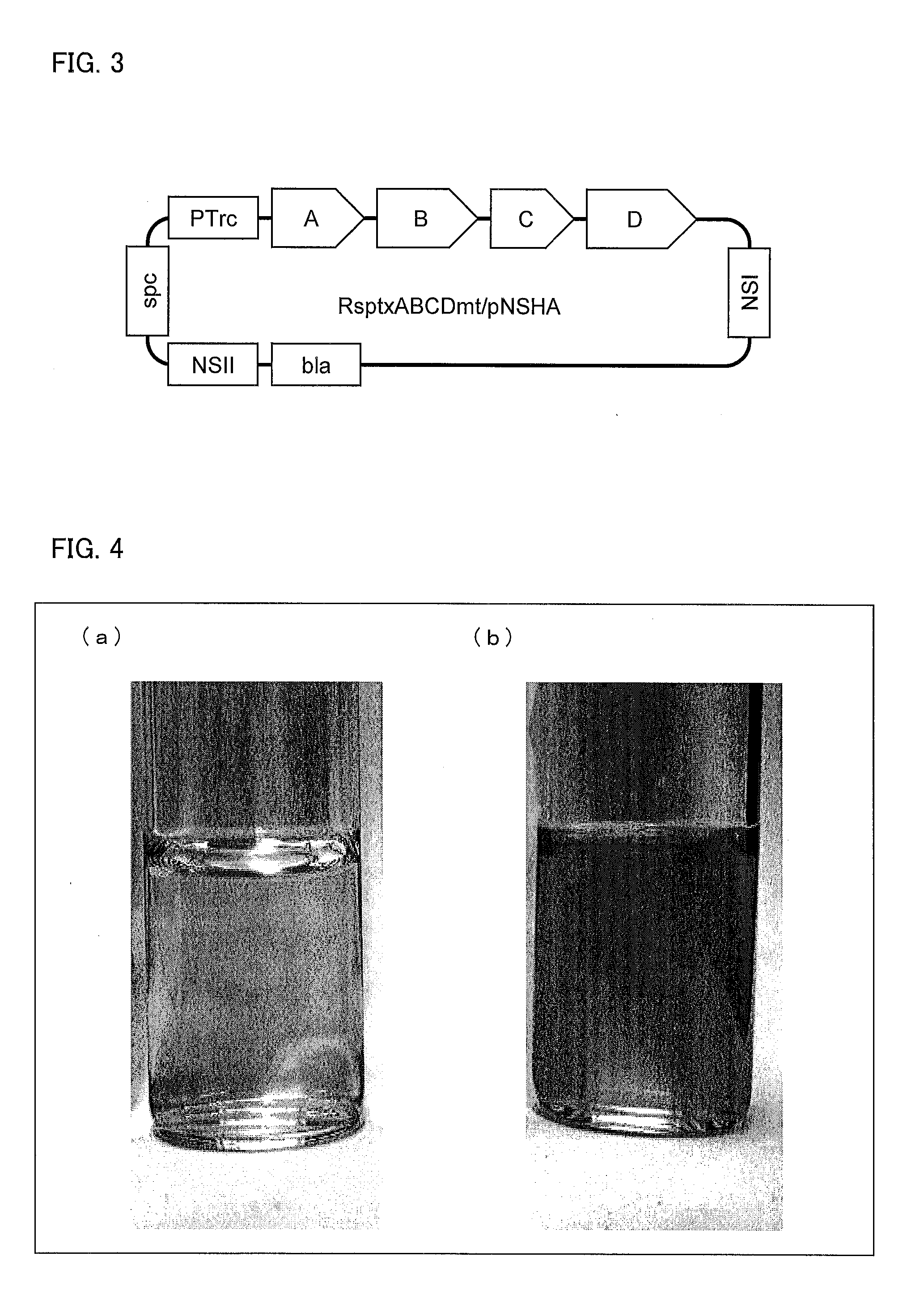Method for selectively culturing microorganism using phosphite dehydrogenase gene as marker
a technology of phosphite dehydrogenase and microorganisms, which is applied in the field of selective culturing microorganisms using phosphite dehydrogenase gene as marker, can solve the problems of high cost of equipment for sterilization, high cost of drug procurement, and high cost of culture media input energy for sterilization, so as to reduce the cost of sterilization and culture system, curb the cost of obtaining antibiotic substances, and reduce the cost of raw materials
- Summary
- Abstract
- Description
- Claims
- Application Information
AI Technical Summary
Benefits of technology
Problems solved by technology
Method used
Image
Examples
examples
[0159][1. Cloning of RsptxABCD]
[0160]RsptxABCD containing a phosphite dehydrogenase gene: RsptxD and a phosphite transporter gene: RsptxABC of Ralstonia sp. strain 4506 (Refer to Hirota et al., J. Biosci. Bioeng., Vol. 113, 445-450, 2012.) was cloned in the following manner.
[0161]With a chromosome of strain 4506 as a template, amplified DNA of approximately 3.6 kb was obtained by performing PCR with the following primers:
Primer Sequences:
[0162]ptxA(-186)fw: 5′-GGAATTCTAGCAGGCGTCTATATTTGGCATAG-3′ (SEQ ID NO: 16). Note “GGAATTC” at the 5′-end is a sequence added for cloning.[0163]ptxD_rv: 5′-AAGGATCCCAGATCTATCACGCCGCCTTTACTC-3′ (SEQ ID NO: 17). Note “AAGGATCC” at the 5′-end is a sequence added for cloning.
[0164]The DNA fragment thus obtained was purified and cloned into a pGEM-Easy T-vector (Promega KK.). An EcoRI digestion product of the plasmid thus obtained was ligated to an EcoRI digestion product of pSTV28 (Takara Bio Inc.) and introduced into E. coli DH5α.
[0165]Plasmids were obt...
PUM
| Property | Measurement | Unit |
|---|---|---|
| temperature | aaaaa | aaaaa |
| temperature | aaaaa | aaaaa |
| temperature | aaaaa | aaaaa |
Abstract
Description
Claims
Application Information
 Login to View More
Login to View More - R&D
- Intellectual Property
- Life Sciences
- Materials
- Tech Scout
- Unparalleled Data Quality
- Higher Quality Content
- 60% Fewer Hallucinations
Browse by: Latest US Patents, China's latest patents, Technical Efficacy Thesaurus, Application Domain, Technology Topic, Popular Technical Reports.
© 2025 PatSnap. All rights reserved.Legal|Privacy policy|Modern Slavery Act Transparency Statement|Sitemap|About US| Contact US: help@patsnap.com



